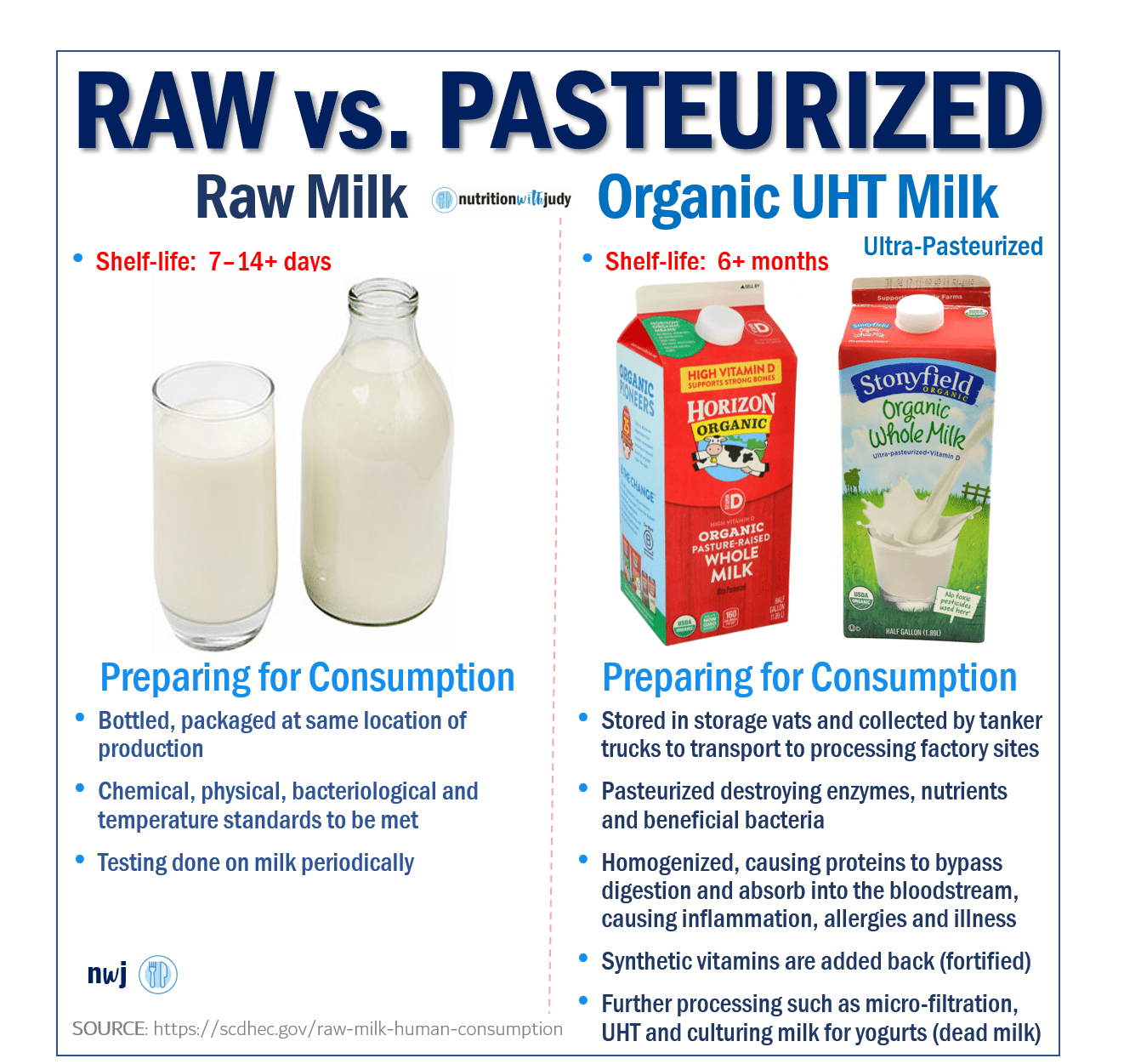

Raw vs. Pasteurized Milk


I am an advocate for raw milk and all raw dairy as it has all the proper nutrients and enzymes to support the human body. And if you tell me that it’s unsafe, my son has drunk raw goat’s milk for the last 5.5 years of his life. Over 2,000 days of raw milk and never once has he been sick from our farmer’s milk. Of course, find a trustworthy farmer—there are many.
For centuries, Americans and other populations relied on raw milk. Up until the 1920s, you could get raw milk in all parts of the United States. With the discovery of milk processing methods and laws banning raw milk, it is almost impossible to find raw milk in grocery stores (depends on your state).
Milk has been known to cause many allergens such as allergies, acne, and even cancer. Cow milk is losing its appeal over the general population with sales declining consistently by 1% year after year. Americans are now opting for plant-based milk varieties like almond and coconut milk over cow milk.
But most of the dairy allergens are from pasteurized and homogenized milk, not raw milk. Now there are some people that can’t tolerate raw milk but usually, it’s because they need to heal the gut or try a different form of raw milk, like goat’s milk.
What Is Raw Milk?
Raw milk is milk that has not undergone any form of heat processing.
Raw milk is directly from cows, goats, sheep, and camels. Raw milk does not go through a pasteurization process. Raw milk retains all nutrients and enzymes, enzymes that can break down lactose.
Raw milk possesses a superior flavor, oftentimes because raw milk will have a creamy top layer. Homogenization, which is carried out during the pasteurization process, constricts certain molecules in order to remove the layer of cream.
This is why most raw milks have a layer of cream at the top of the bottle.
Raw milk is rich in vitamins, iron, calcium, amino acids, antimicrobials, fatty acids, and other nutrients. Raw milk is proven to boost your immune system and reduce the risk of disease or skin conditions. It also helps with allergies, asthma, and lactose intolerance. (Source)
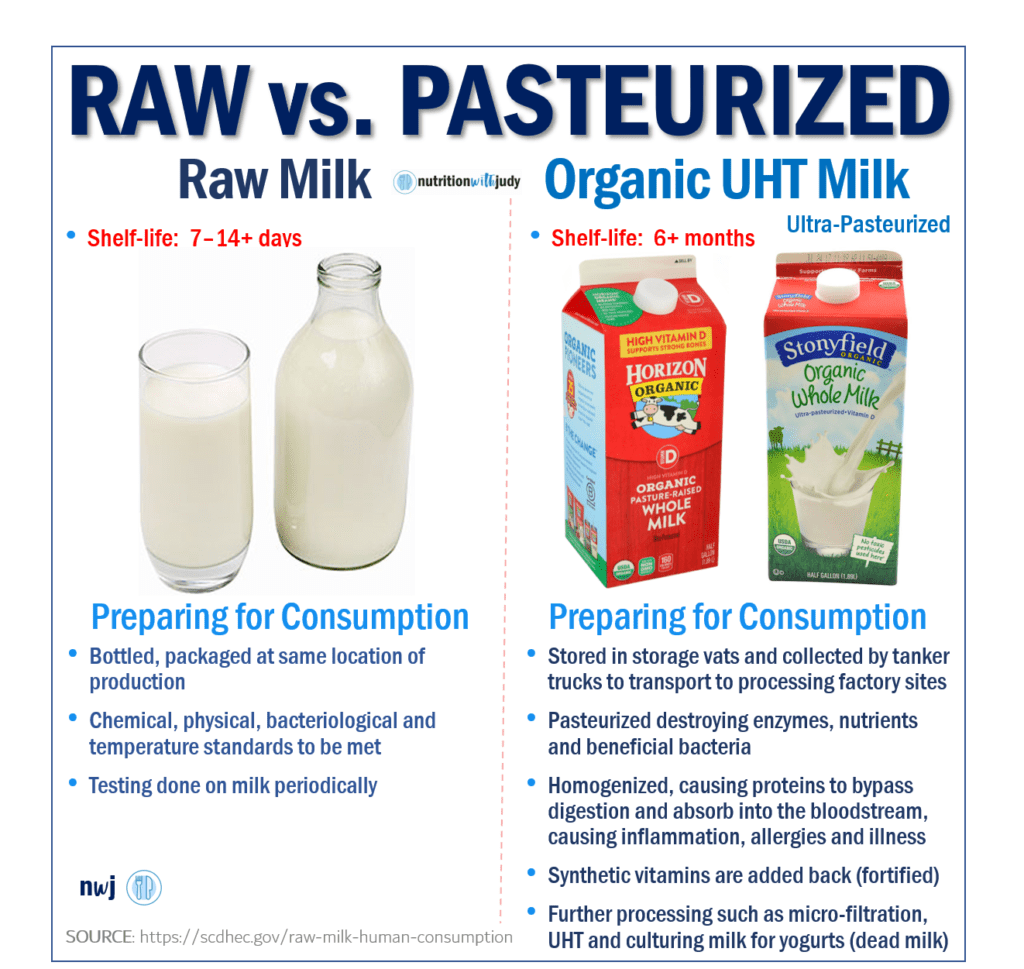

Pasteurized, Homogenized, UHT Milk
Most of us consume pasteurized, UHT (ultra-pasteurized) dairy. These processes are the reasons many of us cannot tolerate dairy. A bold statement but your organic milk UHT milk is not any better than conventional milk as any pasteurization destroys most enzymes, causes loss of vitamin content such as vitamin C, B12, B6, D, kills beneficial bacteria, and promotes pathogens and allergies.
Pasteurized milk undergoes several forms of treatment to kill bacteria and enable it to last on the shelf for months. Pasteurized milk is heat-treated, homogenized, filtered, and then fortified with artificial vitamins and minerals to lengthen its shelf-life from weeks to months.
On a tangent, all almonds from California are pasteurized (80% of the world’s almond production). Almonds aren’t required to be labeled as pasteurized and may still be labeled raw. Stop the nuts.
Homogenization makes fat molecules in milk, smaller in size. Proteins and enzymes that would normally be digested in the stomach bypass digestion and get easily absorbed into the bloodstream.
Hello, autoimmune, histamines and allergic reactions, excess mucus and/or inflammation.
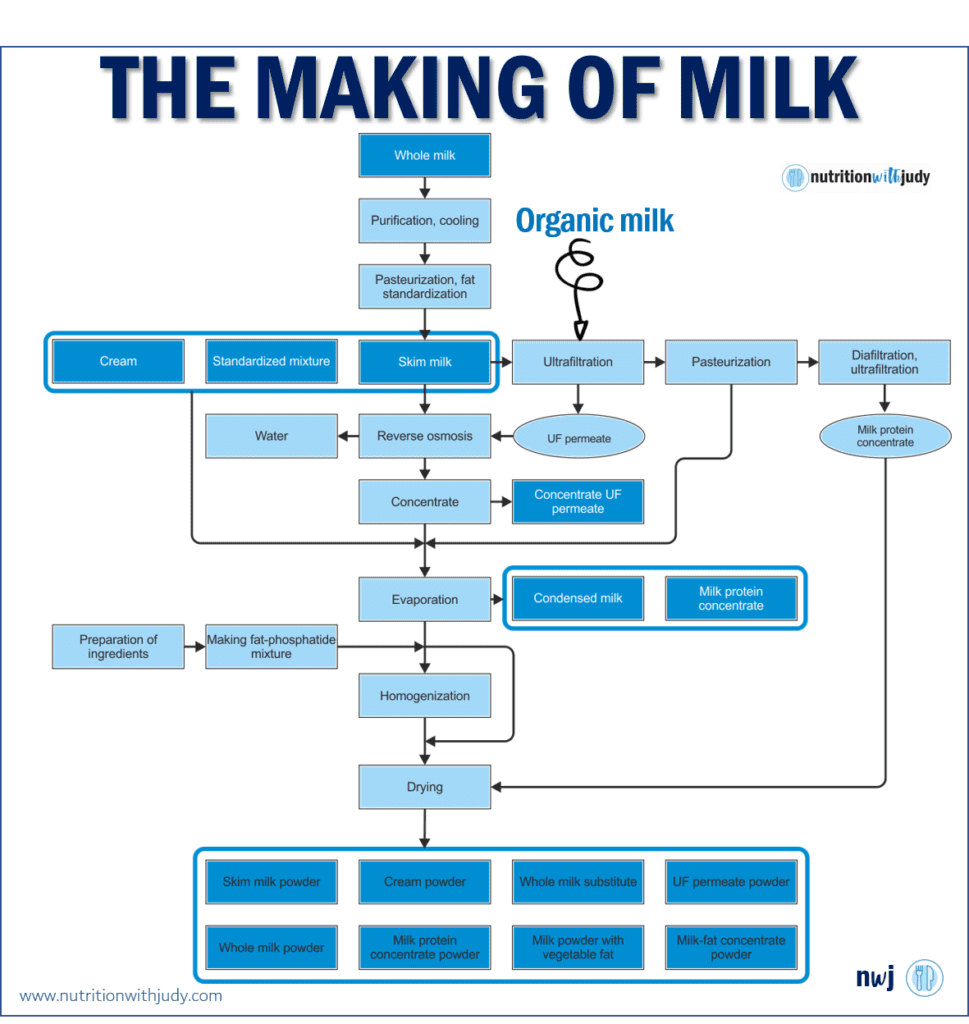

Have you ever noticed that pasteurized, organic milk lasts much longer than conventional milk?
Or that kid’s organic milk boxes sit outside on market shelves but the half-gallon milk containers are refrigerated? One of my first blog posts written for a local Mom Blog was about raw, whole milk. You can read my raw dairy post here. I also break down the toxicity of a seemingly safe, organic milk formula.
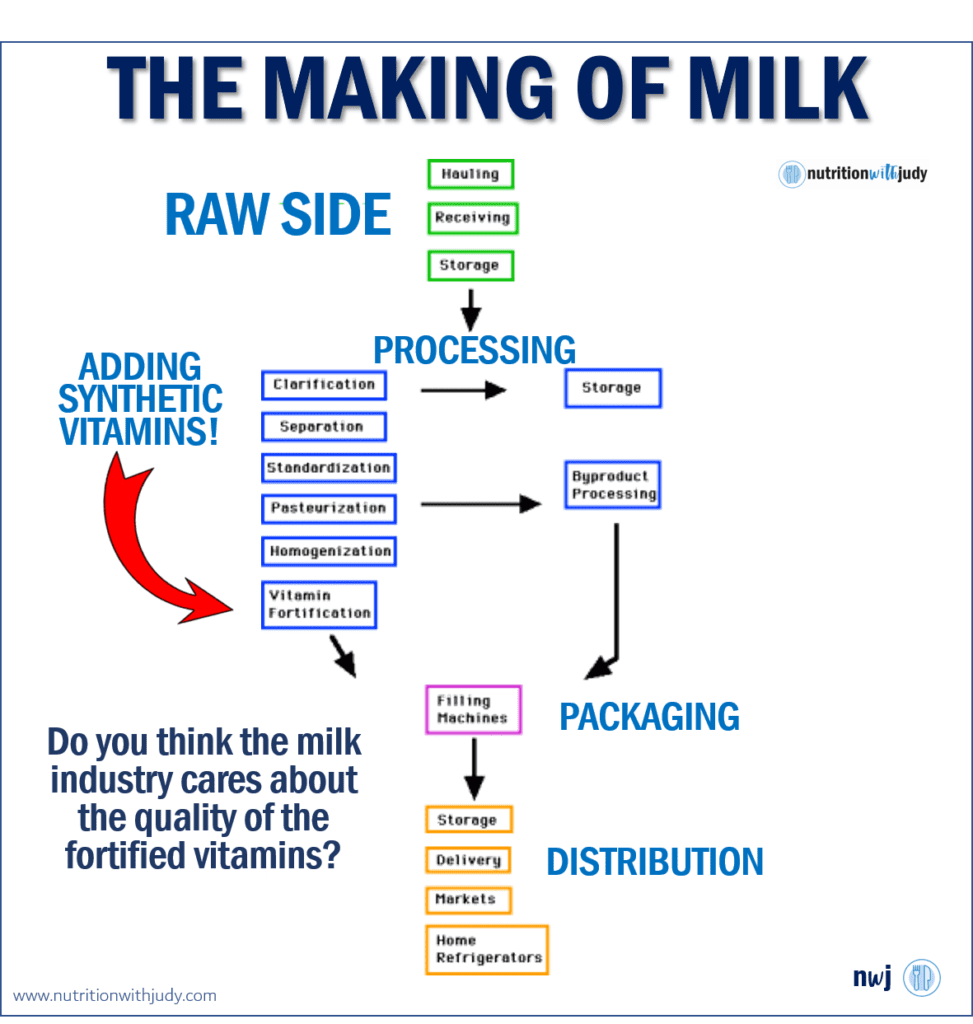

Heal the Gut
Not everyone has access to raw dairy. Raw butter is hard to find. But raw cheese is a bit easier with aged, raw cheese being legal in most states. If you choose milk, choose raw milk as it can heal a sick body. Support your local farmer.
Organic UHT milk has high allergic responses and further exacerbates illness—especially in the gut. If you can’t get raw, limit your milk consumption. Pasteurized grassfed butter may still be an option. But in the case of milk, any UHT (organic) should be limited. And no, A2 won’t make a big difference.
Intolerant to lactose and casein? Might just be the processed milk.
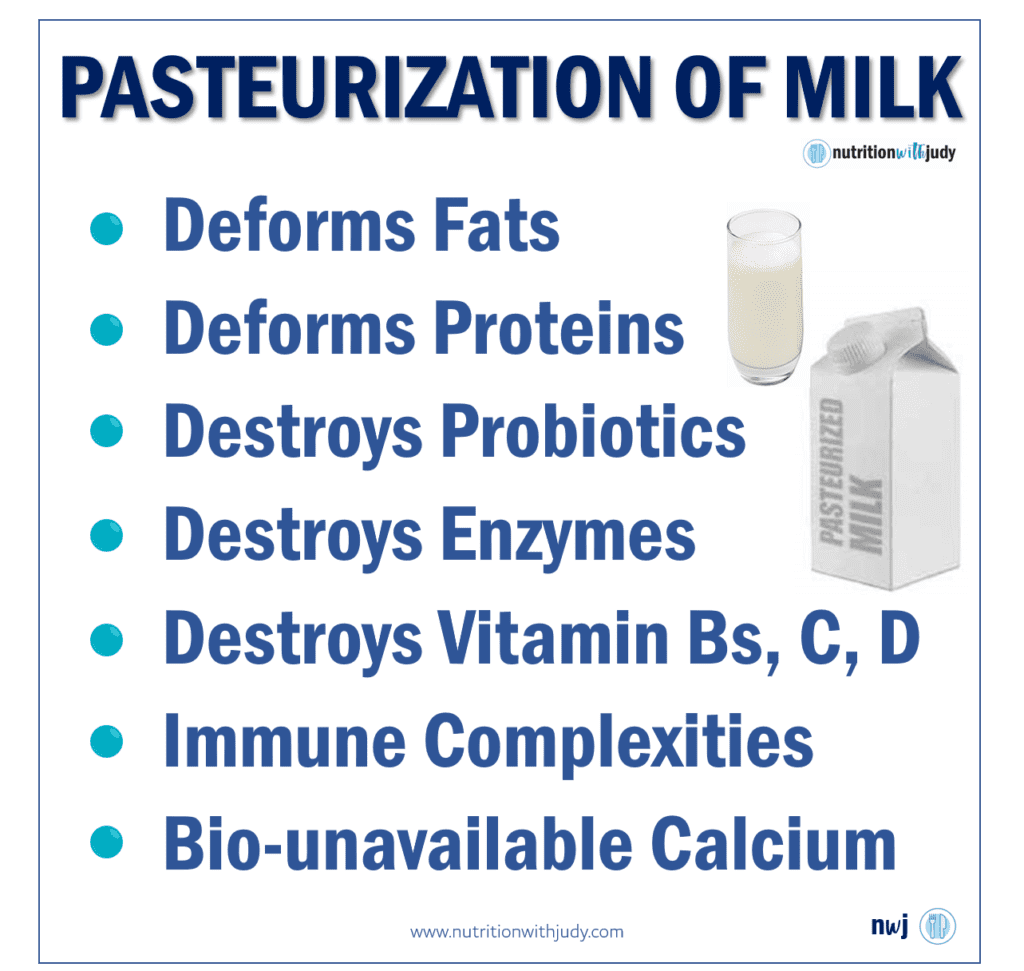

More than half of my clients cannot tolerate dairy. As they heal their gut, they first try some raw milk, ghee, or raw butter. I always have them follow the Carnivore Cure protocol to ensure they can slowly reintroduce any foods they may have sensitivities to.
You can always take the symptom burden test and get closer to your root cause healing.
Better, Best Dairy Options
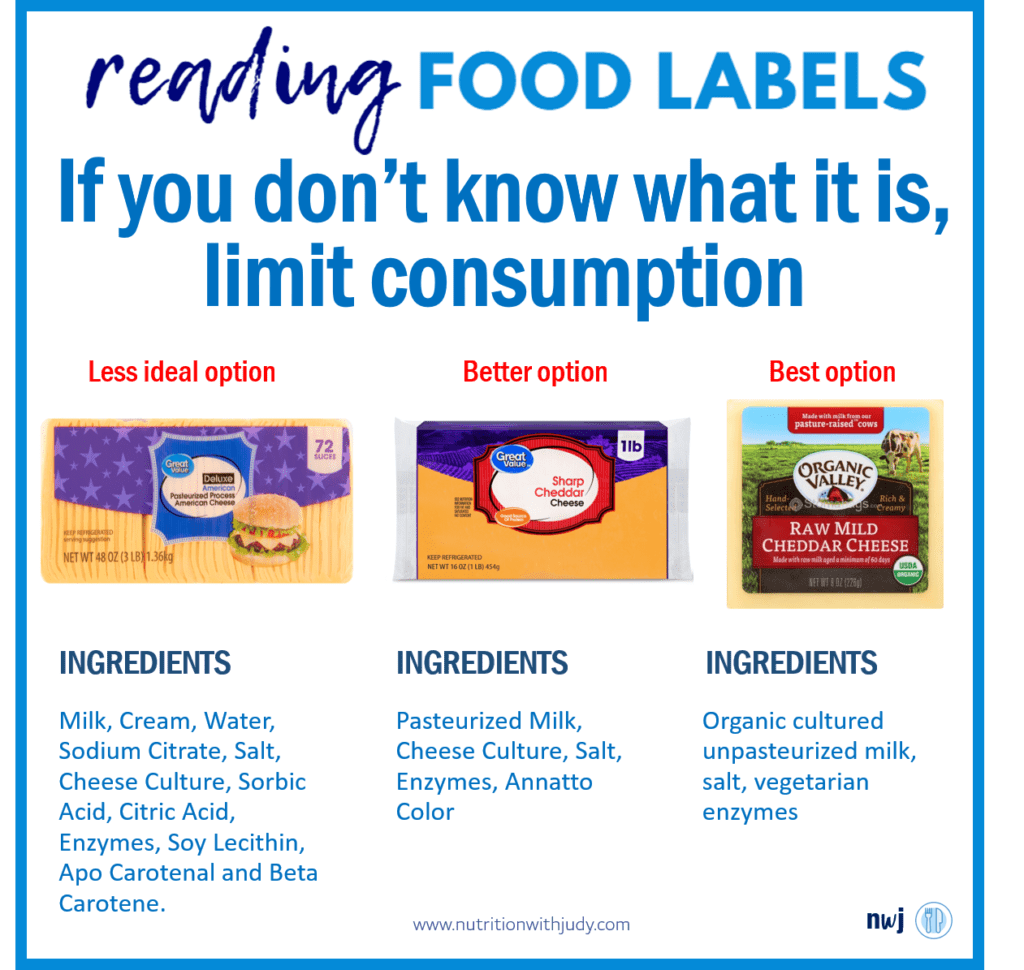

If you seem to tolerate pasteurized dairy and have no physical symptoms, I wouldn’t worry too much about it.
But I would still opt for raw cheese if you have access to it. We want food in its real form. We don’t homogenize and pasteurize breastmilk. If we gave our babies pasteurized breastmilk, they would likely die.
It’s impossible to eat perfectly all the time. That’s okay. Our body should have the resiliency to eat less than ideal foods once in a while. Masking symptoms by limiting food options is a band-aid. That’s why in Carnivore Cure’s elimination protocol, by week 4 or 5, you are back to trying meat-based foods that you couldn’t tolerate during the earlier weeks.
Healing the gut and eating real foods helps us to tolerate more foods over time. The body becomes more resilient. But on most days, we should try to eat better foods. Food is fuel and the fuel you put in the body will determine the energy and overall health of the body.
Because of the milk processing, processed cheese will never be ideal compared to raw cheese. Yes, it’s not as easy or cheap to buy raw cheese but hard, block cheeses are still better than processed American cheese (and much better than cheese made from cheese products).
Most U.S. dairy is pasteurized and most (digestive) enzymes are removed. Raw cheese is ideal as it supports digestion. You can buy raw cheese in most grocery stores as long as the cheese has been aged for 60 days at 35°F.
Raw Roquefort cheese has antifungal, antimicrobial, antiviral medium-chain triglycerides (MCTs) and lauric acids. MCTs don’t need bile acid for digestion so it’s a way to get some more fat in the diet when the body is not used to higher fat. Note: This is not the same as buying MCT oil. Most MCT oils are devoid of nutrients and are highly processed, with many similar processing steps as canola oil.
If you have a mold or histamine sensitivity, careful with raw and aged cheeses. (never simple, right?)
Processed Cheese
Processed cheese does not have the great benefits that raw cheese has. Even natural (pasteurized and homogenized) cheese is made directly from milk but processed cheese is not.
Because processed cheese is not directly from milk. Processed cheese is made from several types of natural cheese to form a new cheese. During this process, they also add other less than ideal ingredients.
Unfortunately, most fast foods use processed cheese.
The more you veer from real foods, the less ideal the food becomes. If you are lactose intolerant, you can try aged cheeses like cheddar, parmesan and asiago as they are lactose-free. The aging process ferments the lactose and so aged cheeses become easier on the digestive process.
If you have high histamine responses, you may need to hold off on all raw dairy from the stores. Raw milk from the farm may still be an option.
Try higher quality cheese, even if it means you eat it less often. You may be intolerant to processed cheese and not cheese in its purest forms.
Closing Thoughts
I wasn’t able to nurse my oldest until he was one. So I went seeking the best alternative I could find and I landed on raw goat’s milk. For the last 5.5 years, I’ve taken the trip to the farm to get the freshest milk possible.
It absolutely is an inconvenience and expensive ($10 a gallon vs. $3 a gallon for conventional milk) but it is absolutely worth it. My two boys are strong and rarely suffer from allergies, especially eczema that is prevalent in my family.
We balance real life with ideal eating and so we still buy conventional cheese. But if any of us have a flare-up or physical symptoms, we get back to basics and eat higher-quality foods (think Carnivore Cure elimination diet).
You don’t have to eat perfect. Just eat well (a heavy focus on meats and limited carbs or seed oils) for most of your days. And let the body do the rest.
w️ith ♥ and hope for healing,


If you enjoyed this blog post, you may also enjoy these Nutrition with Judy blog posts:
- Why I Feed My Kid’s Raw Goat’s Milk
- Make Meat a Priority for You and Your Children
- What’s in Canola Oil
- Don’t Eat Just Beef on a Meat-Based Diet
DISCLAIMER: The content is for educational purposes only. While I am a nutritional therapy practitioner, I am not providing medical advice. Whenever you start a new diet or protocol, always first consult with your trusted practitioner.


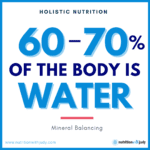

Andrew
October 6, 2021 at 1:12 amOrganic Valley actually does pasteurize their “raw” cheese. On the back it says “To achieve optimal flavor our milk is heat-treated to 158° F for 15 seconds.” This is just 3 degrees cooler than the standard 72 °C (161 °F), and holding for 15 seconds method of pasteurization which is called High Temperature Short Time pasteurization. Also it is stated by food enzyme researcher Dr. Edward Howell that enzymes in raw milk start to degrade at 117°F. So the enzymes are dead at 158° F for 15 seconds. So their claims that their products are “raw” and “unpasteurized” are false.
Marc Boisvert
June 12, 2022 at 1:25 pmthere is a disappointing amount of citing in this article which makes me think this is strictly an opinion article with no factual basis made to lead people astray… especially because it contradicts what the FDA has researched. just my thought
Nutrition with Judy
July 26, 2022 at 10:36 pmA lot of the information is in Carnivore Cure and we pulled it as an article. If there is a specific section you want me to share, I can provide the citation.
Linda Eaton
June 29, 2023 at 10:38 pmI have often thought homogination is counterproductive to digestions breakdown of the product. Am I on track?
Tom P
December 2, 2023 at 1:33 pmI will never feel comfortable ingesting any raw animal products because the devastating disease and parasites they can transmit.